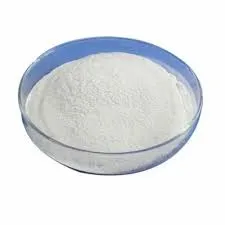
Nov . 19, 2024 10:48 Back to list
HPMC Manufacturing Process and Technology Insights for Optimal Product Development
HPMC Factory A Cornerstone of Modern Manufacturing
Hydroxypropyl Methylcellulose (HPMC) is a versatile cellulose ether that finds applications in various industries, including construction, pharmaceuticals, food, and personal care. As demand for this essential material continues to rise, HPMC factories are becoming increasingly significant in the supply chain landscape. This article explores the operational dynamics, production process, and the importance of an HPMC factory in today’s economy.
At its core, an HPMC factory is designed to produce hydroxypropyl methylcellulose through a series of sophisticated manufacturing processes. The production begins with the selection of high-quality cellulose, usually derived from plant sources. This cellulose is then subjected to chemical modifications involving propylene oxide and methyl chloride. The resultant compound exhibits unique properties such as water-solubility, thickening capacity, and film-forming ability, rendering it ideal for multiple applications.
HPMC Factory A Cornerstone of Modern Manufacturing
One of the most significant applications of HPMC is in the construction industry, where it serves as a critical additive in cement and plaster formulations. HPMC enhances workability, extends open time, and improves water retention in mortars. As global construction activities surge—driven by urbanization and infrastructure development—the demand for HPMC is expected to rise substantially. This trend highlights the importance of robust HPMC manufacturing capabilities in meeting market needs.
hpmc factory

In the pharmaceutical sector, HPMC is commonly used as a binder, coating agent, and controlled-release excipient in tablet formulations. Its biocompatibility and non-toxic nature make it a favored choice among formulators. As healthcare continues to evolve towards more personalized medicine, the role of HPMC factories in producing tailored formulations will be crucial.
Moreover, the food industry utilizes HPMC as a thickening agent, emulsifier, and stabilizer. With a growing preference for natural and clean-label products, the demand for high-quality HPMC that complies with food safety standards is also on the rise.
Sustainability is becoming a focal point for HPMC factories. Many manufacturers are transitioning to eco-friendly practices, sourcing raw materials responsibly, and implementing energy-efficient technologies. This shift not only aligns with global sustainability goals but also meets the rising consumer demand for greener products.
In conclusion, the significance of HPMC factories cannot be overstated. They are indispensable to various industries, contributing to advancements in construction, healthcare, and food technology. As the world moves towards a more sustainable and innovative future, HPMC factories will play a pivotal role in driving growth and ensuring the quality of products that define modern life. The evolution of HPMC production will continue to reflect broader trends in manufacturing, sustainability, and global commerce.
-
Versatile Hpmc Uses in Different Industries
NewsJun.19,2025
-
Redispersible Powder's Role in Enhancing Durability of Construction Products
NewsJun.19,2025
-
Hydroxyethyl Cellulose Applications Driving Green Industrial Processes
NewsJun.19,2025
-
Exploring Different Redispersible Polymer Powder
NewsJun.19,2025
-
Choosing the Right Mortar Bonding Agent
NewsJun.19,2025
-
Applications and Significance of China Hpmc in Modern Industries
NewsJun.19,2025







